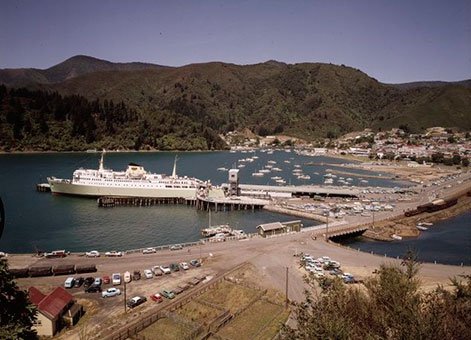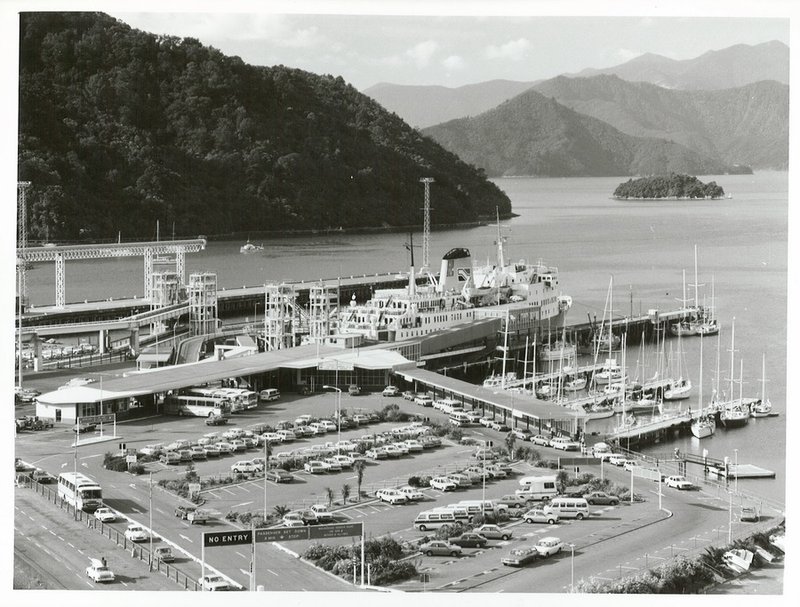An integral part of the national railway system, the Picton ferry terminal handles over $15b to $20b of freight and 1.2 million passengers annually and has been in operation since 1962.

Aramoana at Picton [circa 1962-64], Ref; GG-10-0065-1, Alexander Turnbull Library, Wellington, New Zealand.
Construction of the terminal was difficult. There were severe site constraints. Existing service needed to be maintained without interruption during the construction of Number 2 berth and an overpass over highway and rail yards needed to be erected. The conversion of Number 1 berth included lengthening the longarm and replacing the linkspan and gangways and Number 2 berth was subsequently converted for larger vessels. Dominant factors were urgency, economy, the limitations of the port itself and the desirability of high standards of public amenity.
Technical features
- Lithe design of berth structures including fendering
- The pile foundations designed for low-cost construction over water and economic variation of depth
- The stream diversion culvert under road and railway yards which remained in service
- The stern buffers for exceptional impact loading, rail linkspan seatings on the vessels, offset from the axis of girders, a unique linkage to allow for heeling of vessels under loading and unloading of trains
- The road linkspan seatings on the vessels for exceptional displacements in three modes.

Picton ferry terminal with an inter-island ferry coming into berth Photographer: T. Hann January 1980, Marlborough Sounds Archives New Zealand Reference: AAQT 6539 W3537 6 / R10241
Construction professionals
Consultant engineers: Ian Macallan and Company.
Principal contractors: T.H. Barnes, Cresswell Electrical, Downer and Company, Fisenden Brothers, C.W.F. Hamilton, Kidson Construction, Thompson and Devanny, Wilkins and Davies.
Heritage recognition
IPENZ “Engineering to 1990” project
This item of New Zealand’s engineering heritage was recognised as part of the IPENZ “Engineering to 1990” project which the Institution organised to help celebrate the country’s sesquicentenary in 1990. A plaque was unveiled to mark the significance of this ferry terminal as part of the development of the nation.
